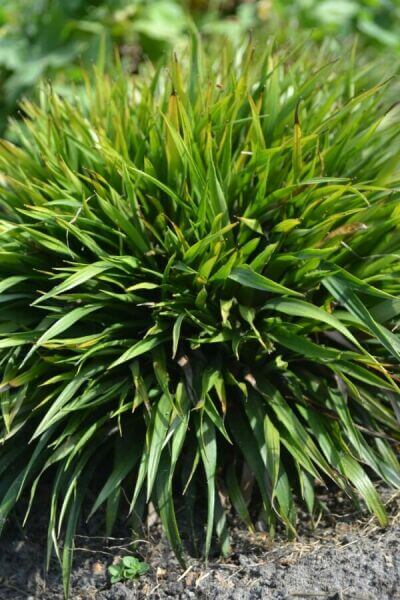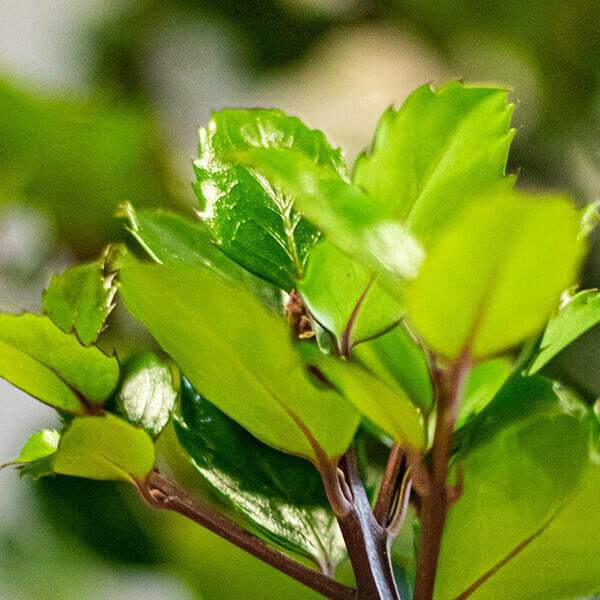Hedging Plants For All Year Interest
Hedging Plants For All Year Interest
Blog Article
Fast-growing Hedge Plants
Boost your garden's attraction with lush hedge ranges such as Yew (Taxus), Thuja, Laurel, Photinia, and Bamboo, commemorated for their structural stability and ecological benefits.
Yew and Thuja supply evergreen coverage and winter strength, while Laurel offers fast growth and broad, fragrant leaves.
Photinia adds seasonal beauty with its vibrant red foliage, and Bamboo lends a low-maintenance, tranquil ambiance.
These hedges improve air quality, minimize sound, and create tranquil, personal areas.
Proper planting, spacing, and upkeep ensure vigorous development and ecological harmony.
Explore how these rich ranges can raise your garden's beauty and well-being.
Secret Takeaways
Change Your Garden With Lush Hedge Ranges
- Select Yew for its thick, evergreen growth and unparalleled durability.
- Choose Laurel for its quick development and broad leaves, ensuring fast privacy.
- Choose Photinia for its dynamic seasonal foliage, which turns a striking dark red.
- Use Bamboo for a low-maintenance, winter-hardy hedge with visual appeal.
- Area plants 2-3 per meter and prune frequently for ideal development and health.
Popular Hedge Plants
When changing a garden with lavish hedge ranges, it's vital to consider popular hedge plants such as Yew, Thuja, Laurel, and Photinia due to their unique qualities and advantages.
Yew (Taxus) is highly esteemed for its longevity and dense, green growth, making it a prime choice for enduring landscapes.
Thuja is kept in mind for its evergreen foliage and robust winter season strength.
Photinia adds seasonal vibrancy with red leaves that darken over time, creating vibrant visual appeal.
Laurel uses fast growth and fragrant, broad leaves, ideal for fast personal privacy.
In Addition, Bamboo is an excellent option for atmosphere, providing a low-maintenance, winter-hardy choice that improves the garden's aesthetic with its elegant, swaying walking canes.
These choices deal with a range of horticultural needs and preferences.
Advantages of Garden Hedges
Garden hedges provide a wide range of benefits, making them an important addition to any landscape. These natural barriers are cost-efficient to execute and provide substantial wind defense, improving air circulation and adding to noise decrease. The dense foliage of hedges like Thuja and Beech ensures personal privacy by obstructing exposure, producing a serene and remote environment.
Hedges also play a crucial function in microclimate regulation, supplying a stable environment that cultivates plant growth and minimizes temperature level fluctuations. Their complex leaf structures filter pollutants, enhancing air quality and contributing to a healthier garden ecosystem.
Additionally, hedges master sound reduction, taking in and deflecting acoustic waves to lower ambient noise levels. This double performance of offering both acoustic and visual privacy enhances the general harmony and aesthetic appeal of any garden.
Planting and Upkeep Tips
For a successful hedge, precise preparation of the planting location is crucial. Guarantee the soil has correct pH and drainage to support strong root development.
Space the plants properly for the chosen species. Water the hedge often throughout its initial growth phase, changing as needed with seasonal modifications.
Implement a methodical insect control and disease avoidance method, using organic or chemical treatments when needed. Frequently check for aphids, mites, and fungal infections.
Apply mulch to maintain moisture and reduce weeds. Seasonal pruning promotes dense growth and air flow, essential for plant health.
Following these guidelines will help you cultivate a vibrant, well-maintained hedge that enhances the charm of your garden.
Spacing and Cutting Standards
Spacing and Cutting Guidelines
Proper spacing and cutting are vital for cultivating healthy, aesthetically appealing hedges. Adequate spacing guarantees each plant gets enough nutrients, light, and air flow.
Follow these standards for optimum hedge upkeep:
- Spacing: Position hedge plants 2-3 plants per meter to motivate robust development.
- Pruning Techniques: Regular pruning is important for maintaining wanted hedge height and shape. Cut new growth in summer season and cut down older wood during winter.
- Seasonal Care: Change trimming approaches and schedules according to seasonal requirements to guarantee plant health.
- Hedge Height: Regularly display and trim to maintain the wanted hedge height and achieve uniform visual appeals.
Abiding by these steps will guarantee your hedge flourishes, boosting both the appeal and functionality of your garden.
Choosing the Right Hedge
Selecting the Right Hedge
Selecting the suitable hedge includes assessing aspects such as mature height, foliage density, and ecological durability. Effective hedge plant selection needs understanding each species' growth characteristics and site-specific versatility.
For instance, Yew (Taxus) offers exceptional longevity and dense click here growth, while Thuja is notable for its winter season resilience. Furthermore, thinking about maintenance requirements is important; fast-growing types like Laurel or Privet demand regular cutting, whereas low-maintenance options like Bamboo or Ivy might be more effective for those seeking minimal upkeep.
Environmental elements such as soil type, light availability, and wetness conditions should also direct the choice procedure. This careful method guarantees the picked hedges will grow, providing both aesthetic and functional advantages to the garden landscape.
Shipment and Planting Advice
To ensure your hedge plants prosper, they must be provided by specialized carriers and planted quickly upon arrival.
Follow these vital actions for effective planting:
- Soil Preparation: Enrich the soil with organic matter to improve drainage and nutrient content.
- Planting Depth: Produce a trench twice the width and equivalent to the depth of the root ball.
- Watering Techniques: Water completely after planting, keeping the soil regularly wet however not saturated.
- Mulching: Apply a layer of mulch to keep moisture and suppress weeds.
Customer Support and Service
Given the crucial role of timely help in horticultural pursuits, our client support team is readily available 6 days a week through telephone, e-mail, and social networks to provide professional recommendations and swiftly deal with any concerns. Their commitment to quick response times ensures client fulfillment by dealing with inquiries associated with plant health, optimum planting methods, and maintenance schedules.

Within 48 hours
This comprehensive support group, strengthened by an outstanding 9.3/ 10 consumer ranking, highlights our dedication to boosting the gardening experience for every single customer.
Regularly Asked Concerns
The Length Of Time Does It Consider Hedge Plants to Develop?
Hedge plants usually need one to 3 years to end up being totally developed, with the specific period differing by species and growing conditions.
Efficient care during this crucial period is essential for robust growth. Constant watering, alert weed control, and proper fertilizer application are pivotal in promoting strong root development.
For example, fast-growing types like Laurel might establish faster, while slower-growing varieties such as Yew might take longer. Diligent upkeep speeds up the establishment process, leading to thick and healthy hedges.
What Are the Finest Hedge Plants for Privacy?
The question of the very best hedge plants for personal privacy includes assessing evergreen and deciduous options.
Evergreen hedges like Thuja, Laurel, and Cypress provide year-round protection, guaranteeing continuous personal privacy.
On the other hand, deciduous hedges such as Beech offer seasonal personal privacy, shedding leaves in chillier months.
Key upkeep ideas for privacy hedges consist of regular trimming, fertilizing in spring, and correct spacing-- generally 2 to 3 plants per meter.
Additionally, constant watering and diligent weed elimination are essential for promoting healthy, thick growth.
Can Hedge Plants Attract Wildlife to My Garden?
Yes, hedge plants can bring in wildlife to your garden by providing necessary benefits like shelter, food, and nesting websites, thus boosting local biodiversity. For example, yew, holly, and laurel are outstanding for bring in birds, while ivy supports a variety of pests.
Nevertheless, it is very important to keep in mind that there are some disadvantages, such as increased upkeep to manage insects and routine upkeep. Thoroughly selecting and preserving hedge ranges can assist balance these advantages and disadvantages, eventually cultivating a sustainable and vibrant community in your garden.
Exist Any Flowering Hedge Plants Available?
Yes, there are flowering hedge plants offered that can boost the appeal of your garden.
For instance, Elaeagnus, likewise called Olive Willow, produces fragrant white flowers in the fall, adding a touch of beauty.
Photinia, another popular option, showcases lively red leaves that mature into a rich green, producing a vibrant visual result throughout the seasons.
To make sure these plants flourish, it's necessary to practice correct pruning techniques and seasonal maintenance, such as trimming new growth in the summertime and cutting down in the winter season.
These procedures will assist maintain the health and aesthetic appeal of your flowering hedges.
How Do I Prevent Pests in My Hedge Plants?
To prevent pests in hedge plants, employ natural pest control methods and preserve correct hedge care. Present useful bugs like ladybugs, which take advantage of hazardous insects, to produce a well balanced community.
Frequently check your hedges for indications of problem and without delay get rid of any afflicted parts to avoid the spread. Ensure the health of your hedges by applying well balanced fertilizers and supplying appropriate water.
Use mulching to retain soil wetness and correct spacing to minimize plant tension and promote robust growth. These practices collectively help in minimizing bug issues and maintaining a healthy hedge.
Conclusion
In essence, picking the ideal hedge varieties such as Yew, Thuja, and Laurel can transform any garden into a tranquil sanctuary. These plants offer year-round greenery, enhance visual appeal, and offer practical advantages like noise decrease and wind defense.
Appropriate planting techniques, precise spacing, consistent watering, and seasonal cutting are crucial for optimal development.
Trusted shipment services and professional customer assistance guarantee a smooth experience from purchase to planting, making it easier than ever to elevate your outside space.
Garden hedges use a wide variety of benefits, making them an important addition to any landscape. These natural barriers are affordable to carry out and offer substantial wind security, improving air circulation and contributing to sound reduction. The dense foliage of hedges like Thuja and Beech makes sure privacy by blocking visibility, producing a remote and serene environment.

Pruning Strategies: Routine pruning is important for maintaining wanted hedge height and shape. Cut new development in summertime and cut back older wood during winter season.
Report this page